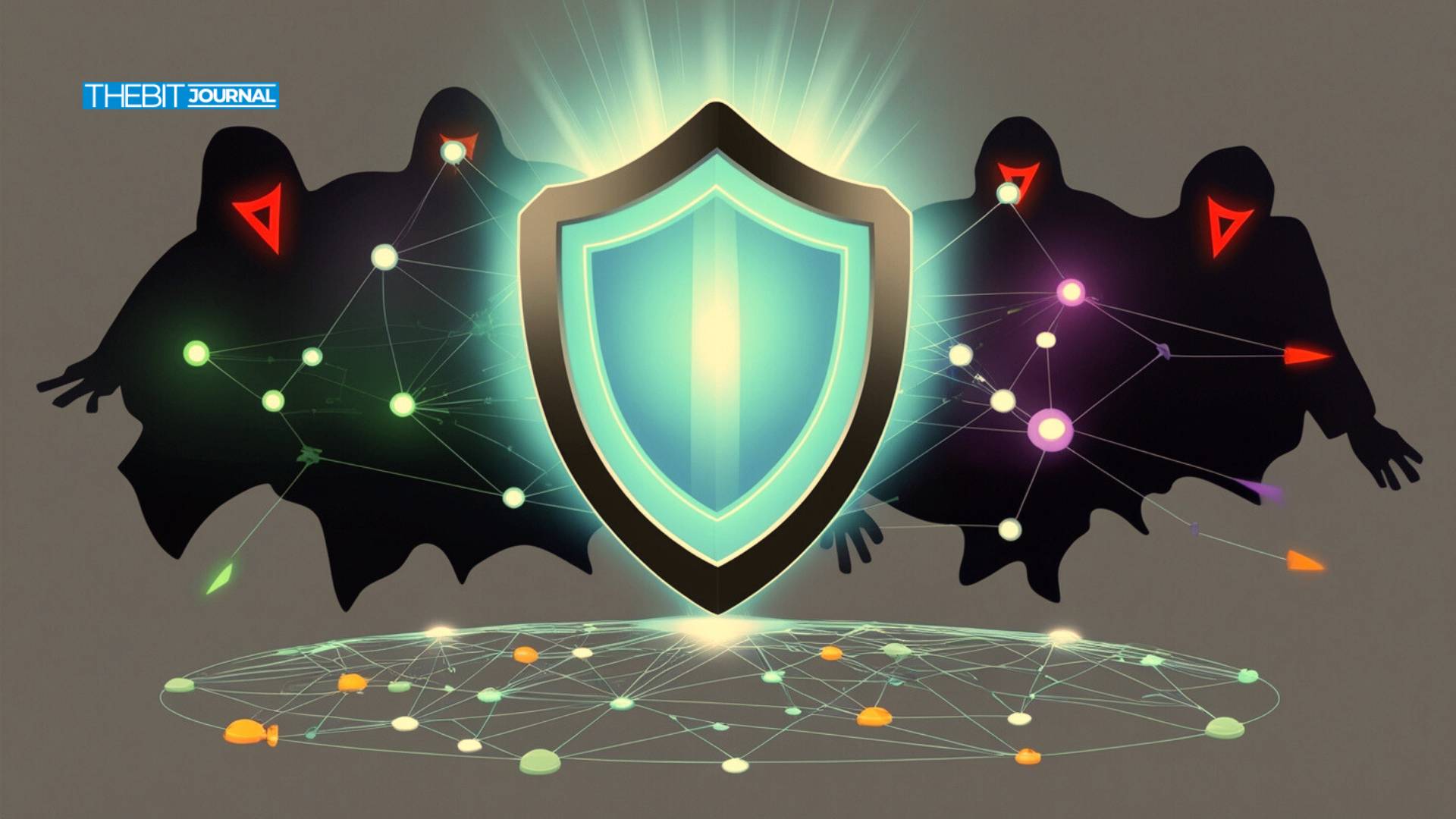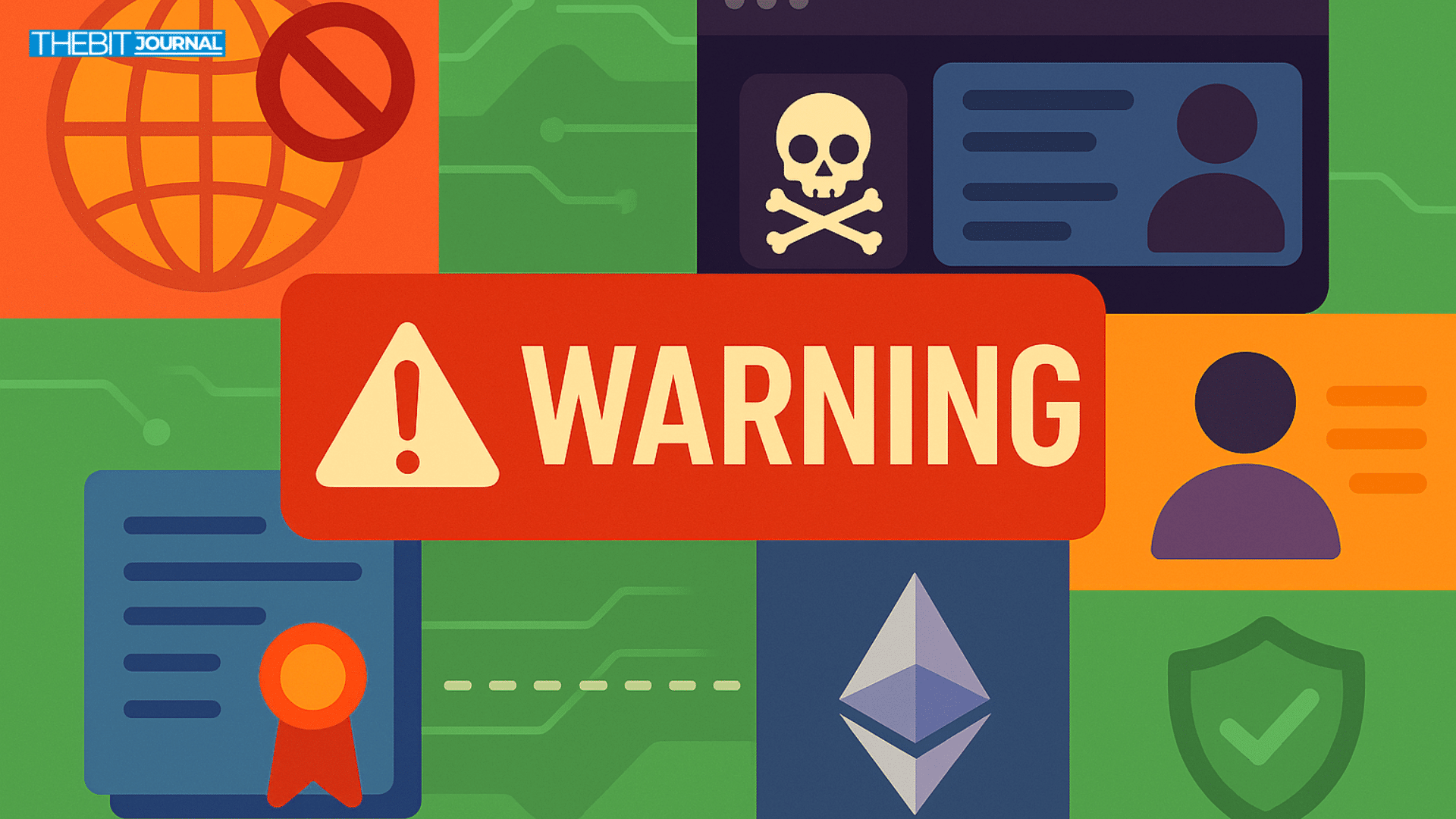The Hidden Threat Killing Web3 Startups: False Blacklist Flags
0
0

Reputation is very important in the Web3 world, which is changing so fast. One warning by a popular wallet, such as MetaMask or Phantom, saying “this site might be dangerous” is enough to scare people away and hamper a project. The issue is how you handle that and how to use the crypto scam flag scanners. The trick is that those warnings are not necessarily true.
False flags occur when secure sites or wallet addresses are mistakenly identified as phishing or scams. This occurs more frequently than most realize. When this occurs, the impact is not always visible but is real: partners are confused, users lose faith in the project, and the community begins to doubt.
That is the particular gap dappdetect fills. It acts as a crypto scam flag scanner, enabling teams to identify and correct unwarranted alarms before they hit users or revenue.
Fake Blacklist Warnings: The Silent Threat in Web3
Fundamentally, dappdetect‘s most critical service is straightforwardly misleading: it identifies and assists with deleting false blacklist tags using the crypto scam flag scanner. In Web2, becoming blacklisted by a spam filter may result in your emails being ignored. In Web3, a well-established dApp can be prevented from working entirely, showing warnings on popular wallet interfaces.
False blacklist tags can appear for several reasons:
Whatever the cause, the effect is the same: big red warning message, and users click away. For Web3 projects that have been built on trust and high adoption rates, this sort of silent barrier can be devastating
- A domain once belonged to an individual who was operating illegal schemes.
- Shared hosting puts your website on the same IP as suspicious websites.
- Automated scans confuse your project as a clone or honeypot.
- Abusers or competitors submit fake abuse reports.
- Outdated SSL certificates or DNS misconfigurations activate security bots.

How Crypto Scam Flag Scanner Finds the Problem
dappdetect performs deep scans on over 15 reliable providers, including MetaMask, Coinbase Wallet, and Phantom, some of the popular Web3 wallets. It allows you to have the quick scan perform a fast check on a wallet address or domain to get an immediate snapshot of its blacklist status.
If any issues are found, the tool doesn’t just say “you’re flagged.” Instead, it shows precisely where the flag is active, explains possible causes, and outlines how to fix it. This clarity is especially valuable in a fragmented Web3 security landscape where blocklists don’t always communicate with each other.
In a sector where reputation is everything and transparency is limited, this kind of actionable insight is transformative.
Removing False Flags: From Detection to Resolution
Once a blacklist tag is detected, dappdetect provides guided unblock assistance. You’ll get instructions on how to compose delisting requests, or, in some plans, the team will reach out on your behalf.
The process typically follows these steps:
1. Gather proof of legitimacy, smart contract code, audit reports, SSL certificates, and community endorsements
2. Submit the appeal to the relevant provider
3. Track the status until the flag is removed
This is work most Web3 teams aren’t staffed for, especially during launches or high‑traffic periods. Ignoring false flags, using crypto scam flag scanner however, can cost far more in lost conversions and tarnished reputation.
Real‑World Application: dappdetect in Action
Imagine you’re running a token presale when suddenly Phantom displays “This dApp may be malicious.” Without context, you’d dig through Discord or file support tickets, often waiting days or weeks.
With dappdetect, a crypto scam flag scanner you scan and verify the Phantom flag quickly. You then create a focused appeal via a workflow guide, all while monitoring progress in a single dashboard. The end result is quicker resolution with less disruption to your users.

Why the Feature Matters for Builders
To most Web3 developers, “Detect and remove false blacklist tags” using the crypto scam flag scanner is just a background task. But in fact, it behaves like a Web3 reputation firewall. Just as uptime monitors protect SaaS apps, dappdetect protects dApps against accidental blocks.
This protection is particularly crucial for:
-
- Token launches are being threatened by unexpected domain blocks
-
- DeFi platforms are reliant on wallet integrations
-
- NFT marketplaces that need smooth wallet–site interaction
-
- Launchpads and agencies gearing up for client rollouts
Final Thoughts: Trust Is the Real Asset in Web3
In a world that’s decentralized to the point where intermediaries are eliminated by code, being mislabeled as a scam isn’t merely an inconvenience, its existence. Projects which are unable to identify and fix false flags using the crypto scam flag scanner suffer user trust and growth loss.
dappdetect introduces a quiet but potent layer of Web3 infrastructure. It identifies these false positive scams, assists in fixing them, and maintains project integrity, oftentimes before the issue hits the public eye.
If you’re building in Web3 whether as a small DAO or a large-scale platform ask yourself: what happens when your users see warnings that don’t belong? A crypto scam flag scanner like DappDetect helps ensure that when your product launches, it’s your offering that impresses, not your reputation that’s in question.
In Web3, reputation is not reactive; it’s proactive. And services like dappdetect make that possible.
FAQs
-
- What is DappDetect and how does it function as a crypto scam flag scanner?
DappDetect is a crypto scam flag scanner that detects fake blacklist tags issued on Web3 domains and wallet addresses. It scans through top wallets such as MetaMask, Phantom, and Coinbase Wallet to assist projects in upholding their integrity.
- What is DappDetect and how does it function as a crypto scam flag scanner?
-
- Why are fake blacklist tags such a huge issue in crypto?
Even one false scam tag may tarnish a project’s reputation, drive away traffic, and eliminate conversions. A crypto scam flag scanner such as dappdetect enables projects to find and fix these problems early.
- Why are fake blacklist tags such a huge issue in crypto?
-
- Does DappDetect delete scam warnings from wallets such as MetaMask?
DappDetect does more than detect scam warnings—it helps delete them by assisting with delisting or performing it itself, depending on the subscription.
- Does DappDetect delete scam warnings from wallets such as MetaMask?
Glossary
-
- Crypto Scam Flag Scanner
An application that verifies whether Web3 domains or wallet addresses have been wrongly marked as scams or phishing websites, enabling projects to act in a timely manner.
- Crypto Scam Flag Scanner
-
- Blacklist Tag
A warning tag displayed in crypto wallets stating a domain or address is not safe. Typically fueled by third-party threat intelligence feeds.
- Blacklist Tag
-
- False Positive
A false flag where a genuine crypto project gets mistakenly identified as a scam, typically because of stale information or error reporting.
- False Positive
-
- Delisting Request
An official appeal to a wallet operator or security database to delist a false scam label from a domain or wallet address.
- Delisting Request
-
- Quick Scan
A characteristic in crypto scam flag scanners such as dappdetect that provides real-time information regarding a domain or wallet’s blacklist status across multiple providers.
- Quick Scan
Sources
Read More: The Hidden Threat Killing Web3 Startups: False Blacklist Flags">The Hidden Threat Killing Web3 Startups: False Blacklist Flags
0
0
 Manage all your crypto, NFT and DeFi from one place
Manage all your crypto, NFT and DeFi from one placeSecurely connect the portfolio you’re using to start.




